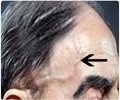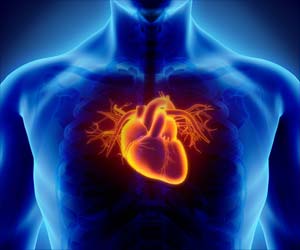A new study at the Stanford University School of Medicine has given a solution to the mystery surrounding the development of the coronary artery.
A new study at the Stanford University School of Medicine has given a solution to the mystery surrounding the development of the coronary artery.
The study has appeared in the journal Nature.Researchers studying cardiac development in mouse embryos found that the vessels delivering blood to nourish the continuously pumping heart muscle are the source of cells that become the coronary arteries. And quite unexpectedly, the cells originate in an entirely different part of the heart than previously thought.
Although they begin life as venous cells, directing blood into the chambers of the embryonic heart, they undergo a form of natural reprogramming as they migrate across and into the surface of the heart to become arteries and capillaries.
The researchers believe understanding and recreating the conditions that allow these cells to switch identities from vein to artery could help the millions of people struggling with coronary artery disease.
Lead author Kristy Red-Horse, a biochemist and postdoctoral scholar, said: "Physicians performing coronary bypasses often use veins to reroute blood flow around clogged arteries.
"But these veins fail more often and more quickly than transplanted arteries."
Advertisement
Senior author of the study, Mark Krasnow, professor and chair of biochemistry, said: "If we can learn about how coronary arteries develop normally, we may be able to take that information and engineer better coronary bypass grafts, or even learn how to increase blood flow to the heart muscle without surgery."
Advertisement
However, when Red-Horse looked closely at the cells over time she found that about 11.5 days after conception, cells from an embryonic cardiac structure called the sinus venosus, which directs blood into the developing heart, began to migrate across the surface of the muscle. By 14.5 days, they had become recognizable coronary arteries.
Red-Horse said: "This was really surprising.
"I thought, as many others did, that these cells would arise from the proepicardium. The second surprise came when we realized the cells were de-differentiating from venous cells and becoming arteries."
While veins funnel deoxygenated blood back to the heart, arteries coronary and otherwise - deliver fresh blood throughout the body. And the cells that make up veins and arteries are very different. Each has to handle a unique set of conditions, including the pressure, flow patterns, pH and biochemical components of the blood they transport.
To confirm her finding, Red-Horse cultured developing hearts from mouse embryos in a dish. She found that, in contrast to controls, the chambers of hearts in which she had removed the sinus venosus kept beating but never developed coronary vessels.
Red-Horse then used a cell-marking technology developed by senior research scientist Hiroo Ueno, in the laboratory of Irving Weissman, director of Stanford's Institute for Stem Cell Biology and Regenerative Medicine, to label individual cells in the developing hearts of mouse embryos with different colours.
Krasnow, a member of the Stanford Cancer Center, said: "This is a beautiful example of natural reprogramming. The heart is somehow telling these venous cells to leave the sinus venosus and convert into coronary arteries. If we can identify these molecular signals, we might be able to use them to construct coronary arteries for bypass surgery, which could be very important herapeutically."(ANI)
Source-ANI
SAV










